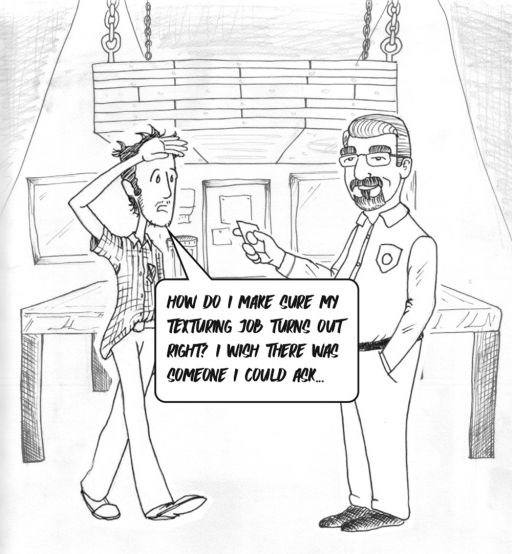New Q&A Series: The Finish Line
Today begins a monthly Q&A series called, The Finish Line, which will provide answers to some of the industry’s most discussed questions when it comes to moldmaking and finishing. Join the discussion.

Close to 40 years in the molding business has blessed me with a strong network of knowledgeable industry peers, a solid team of professionals within my company and a wealth of experience with moldmaking and finishing challenges. Over the years, our team has been a part of solving countless problems and learning a lot along the way. So much so, that we believe it is time to share what we’ve learned with others, so they too can reach new levels of success and efficiency without the dreaded trial and error.
Today we begin a monthly Q&A series on the MMT daily blog called: The Finish Line. We will contribute content that provides answers to some of the industry’s most discussed questions when it comes to moldmaking and finishing. And, if we don’t have the answer, we’ll search our resources to get one for you.
Let’s get to our first question for which I reached out to my friend, Mike Donlin, vice president of Comet Die & Engraving :
Q: When it comes to texturing a mold, what steps should be taken to ensure a successful job?
A: The first thing you need to do is determine the material used. This seems obvious, but we are going for success, not good enough, and every step counts. Once you know the material you need to prep your job. Make sure that all chrome is removed from your part. Once the job is prepped, it’s time to polish your cavity.
Ensure that any and all imperfections and EDM scale is completely removed from the cavity, or mold, in the area to be textured. This step is so important because EDM is essentially the enemy of any successful texturing job, as it can act as a barrier between the steel and the acid used, resulting in an inconsistent finish. When it comes to cutter marks and scratches, most textures will not be able to cover or hide these issues and will result in flaws in the job, which is precisely what we are trying to avoid.
So how do we do this? For a standard texture, you will want to achieve a polishing finish of at least a 400 stone or the equivalent of a 240 Emery finish. For more precise detailed textures, the polish may need to be improved to an even finer finish. Once you think the polishing is complete, you can apply a glass bead that will make any missed areas stand out, which allows you to concentrate on those specific areas. We are going for success, so this is no time for shortcuts. After you have completed these steps, you are ready to start texturing.
Here are a few more tips for you:
- Any necessary heat treating should be done after the texturing process.
- Always weld with the parent steel.
- Preheat your job to 900 degrees and weld while the part is hot.
- Do not bench on texture, as it will change the depth to where the new texture depth will not be able to match.
- Always have enough draft (1 to 1 1/2 per .001)
- Run the grain in the direction of the pull, if possible.
We hope you find this information helpful and we look forward to reading your thoughts and comments below. If you have a question that you would like answered, please email cfuges@gardnerweb.com, and you could be the next question answered in The Finish Line.
Read Next
How to Use Strategic Planning Tools, Data to Manage the Human Side of Business
Q&A with Marion Wells, MMT EAB member and founder of Human Asset Management.
Read MoreHow to Use Continuing Education to Remain Competitive in Moldmaking
Continued training helps moldmakers make tooling decisions and properly use the latest cutting tool to efficiently machine high-quality molds.
Read MoreReasons to Use Fiber Lasers for Mold Cleaning
Fiber lasers offer a simplicity, speed, control and portability, minimizing mold cleaning risks.
Read More









.png;maxWidth=300;quality=90)




.jpg;maxWidth=300;quality=90)

_300x250 3.png;maxWidth=300;quality=90)




